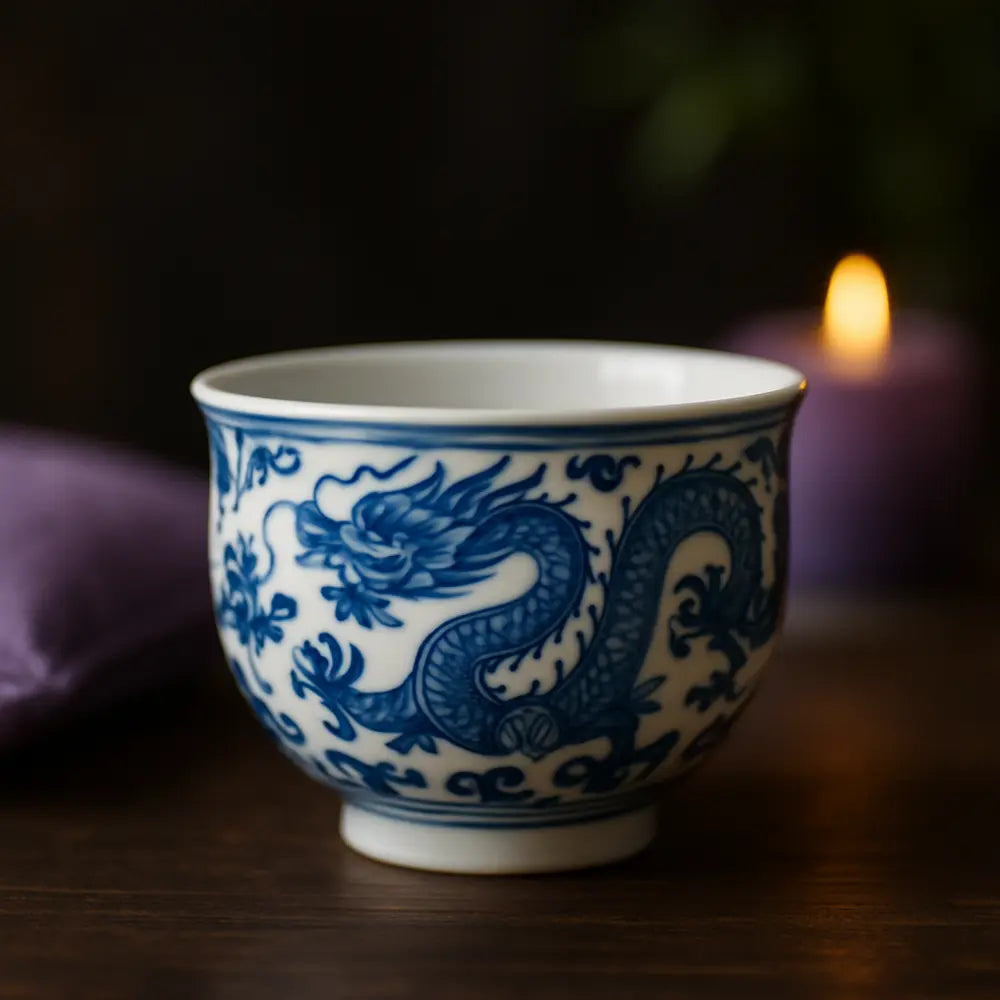
Chinesische Teetassen
190 Produkte
Zeigt 1 - 24 von 190 Produkten
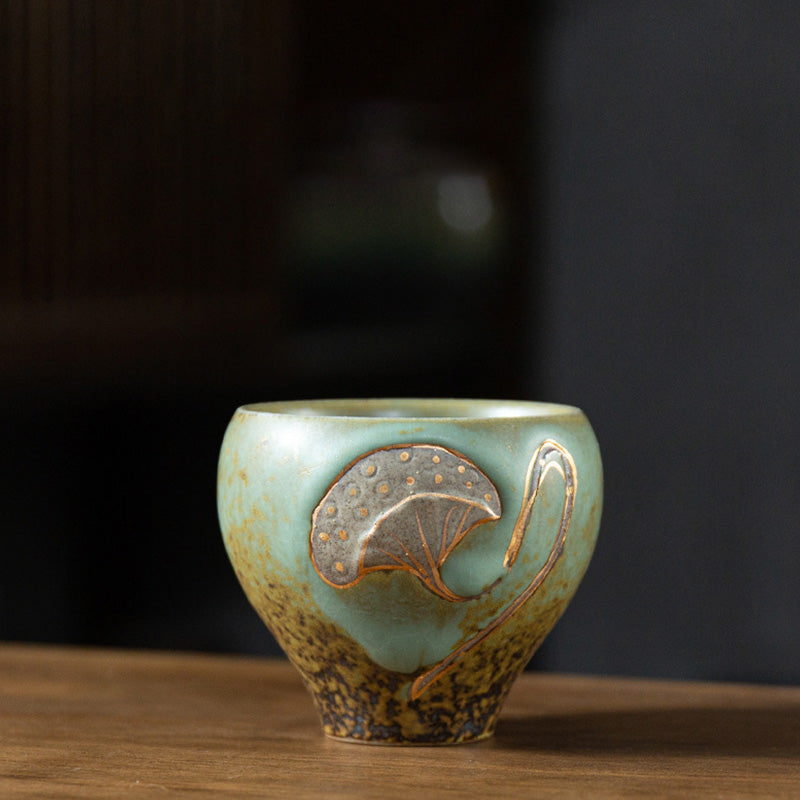
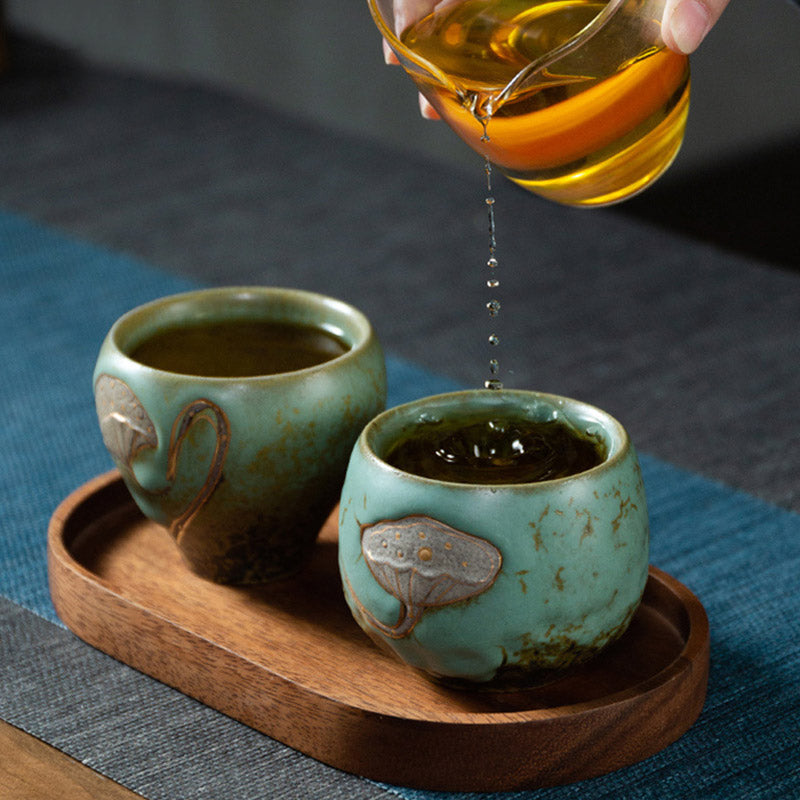
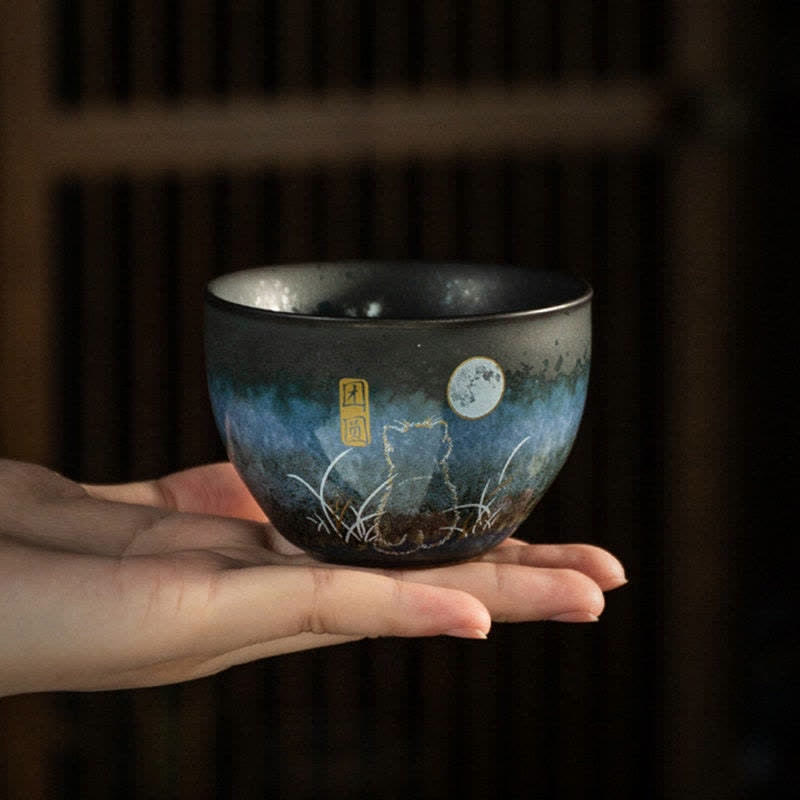
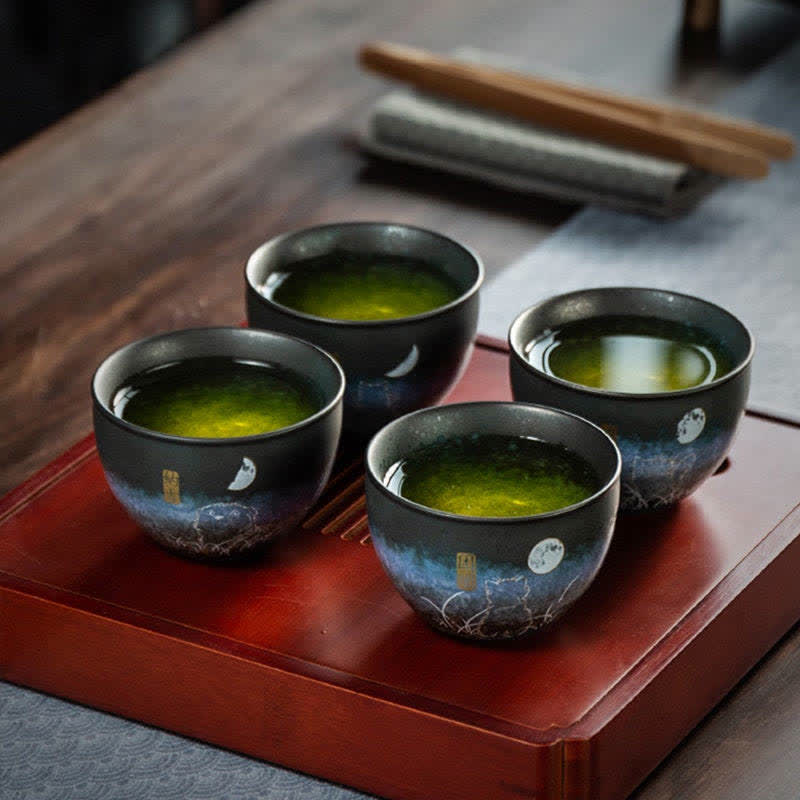
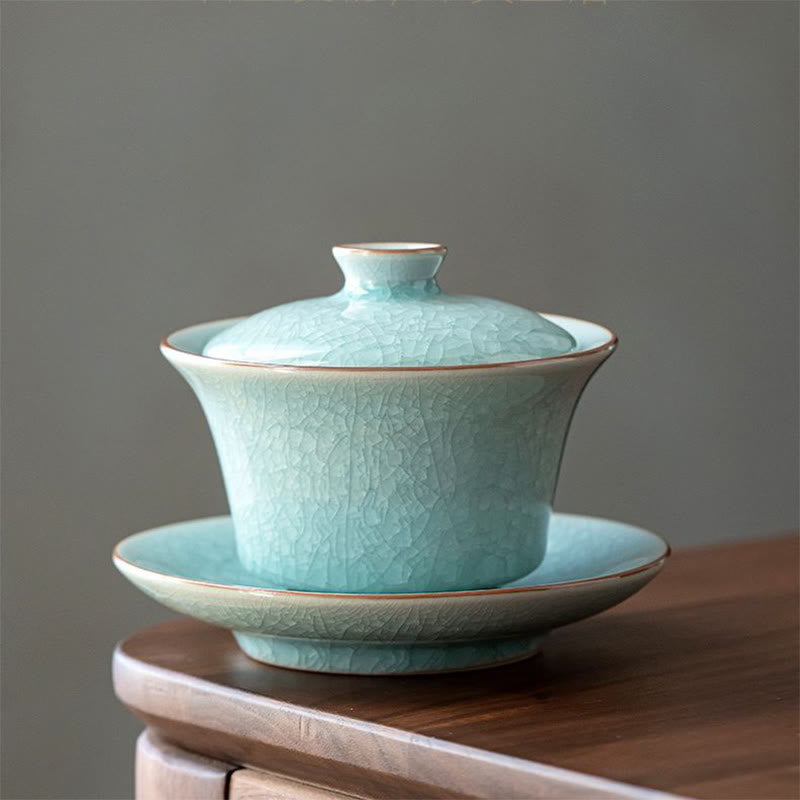

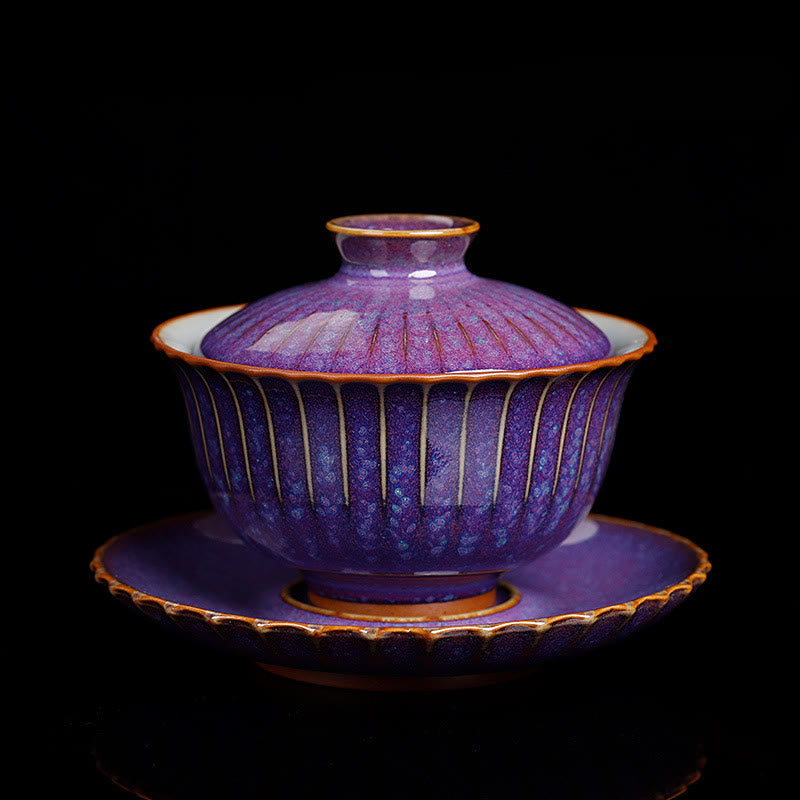
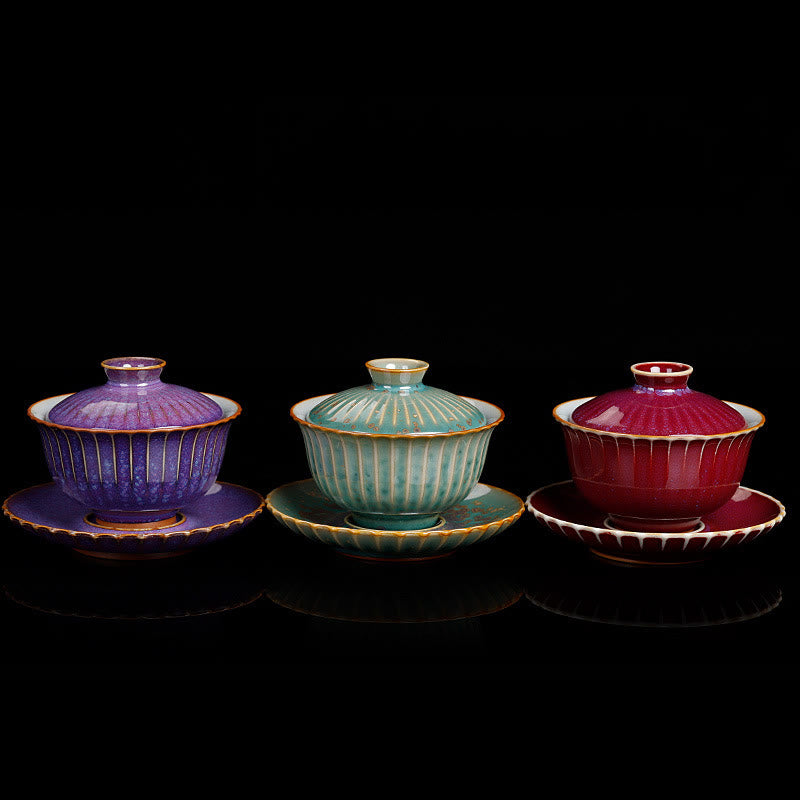

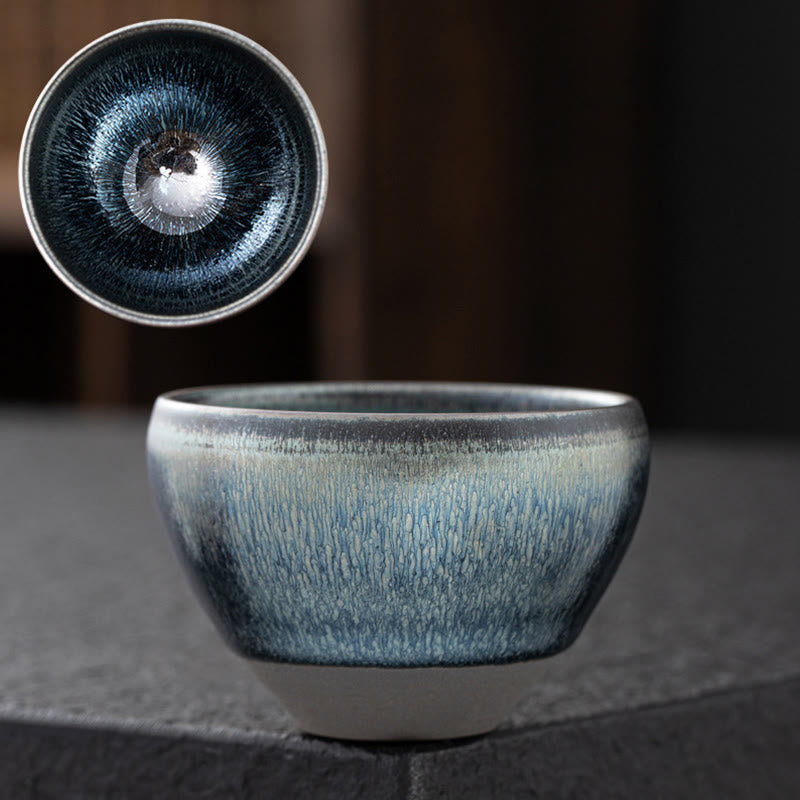
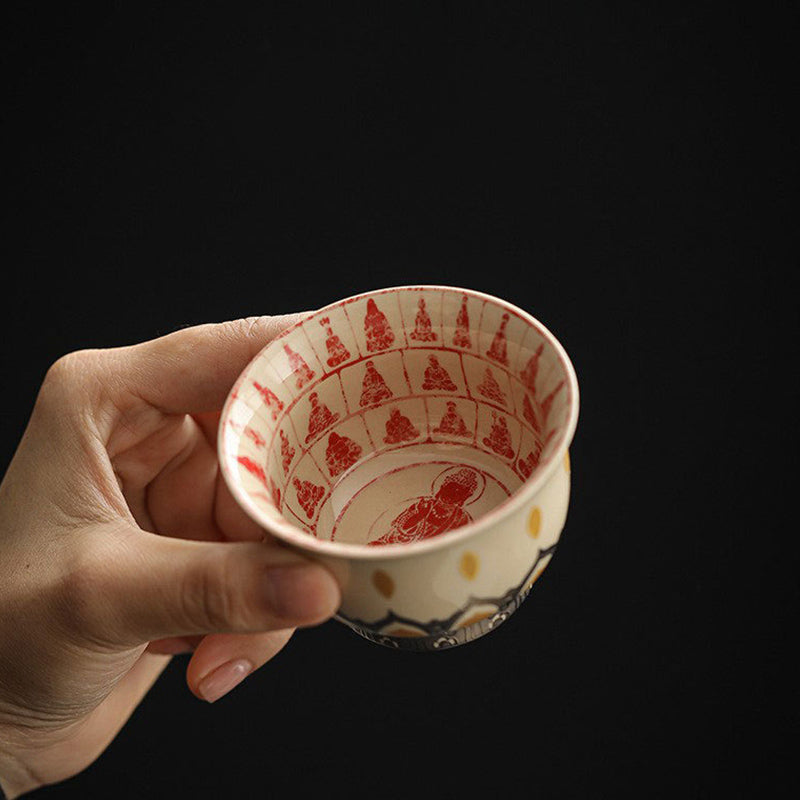
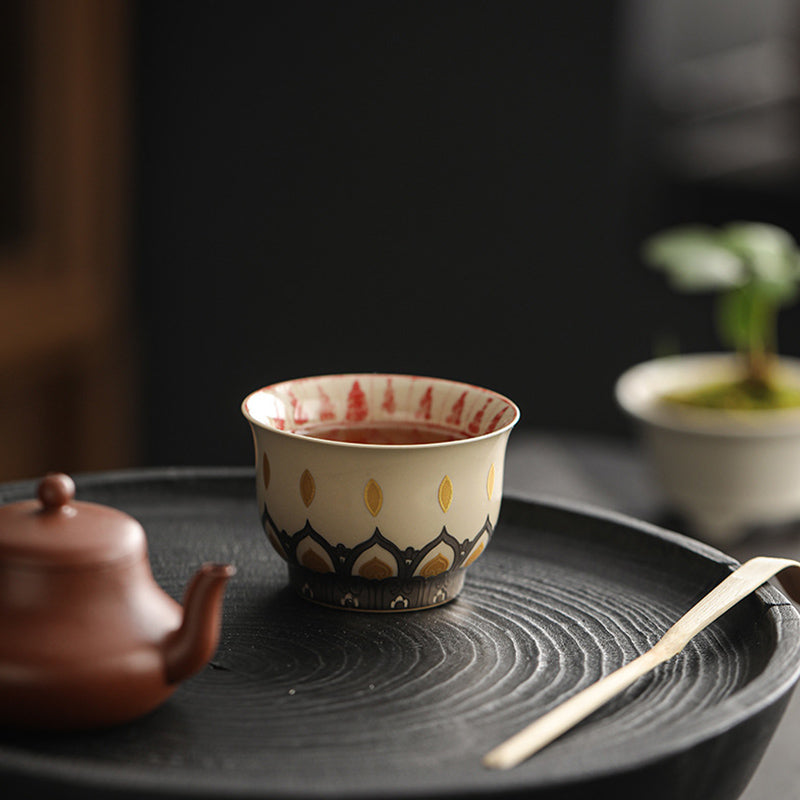
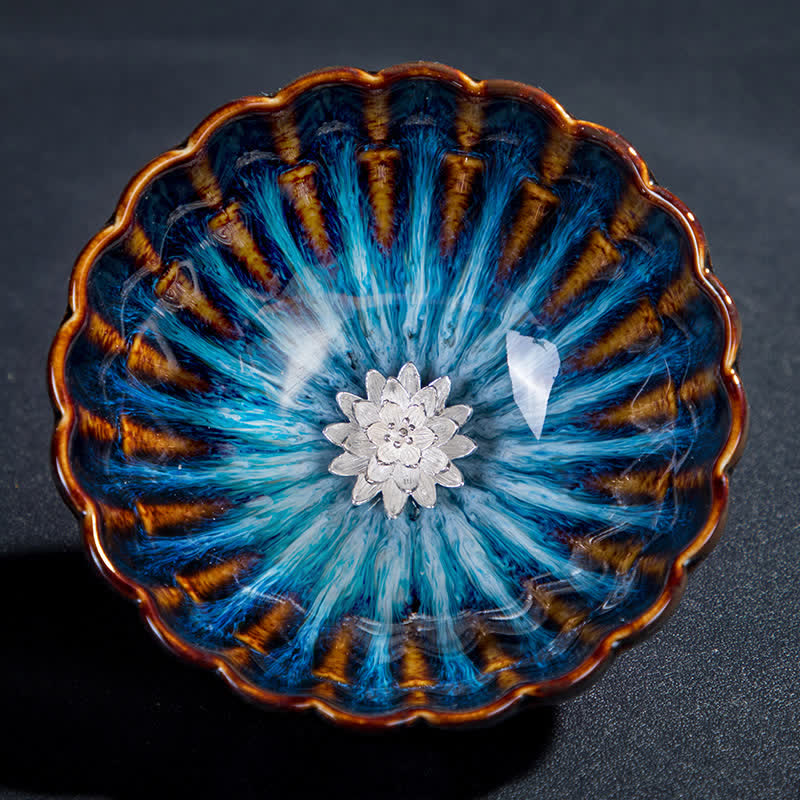
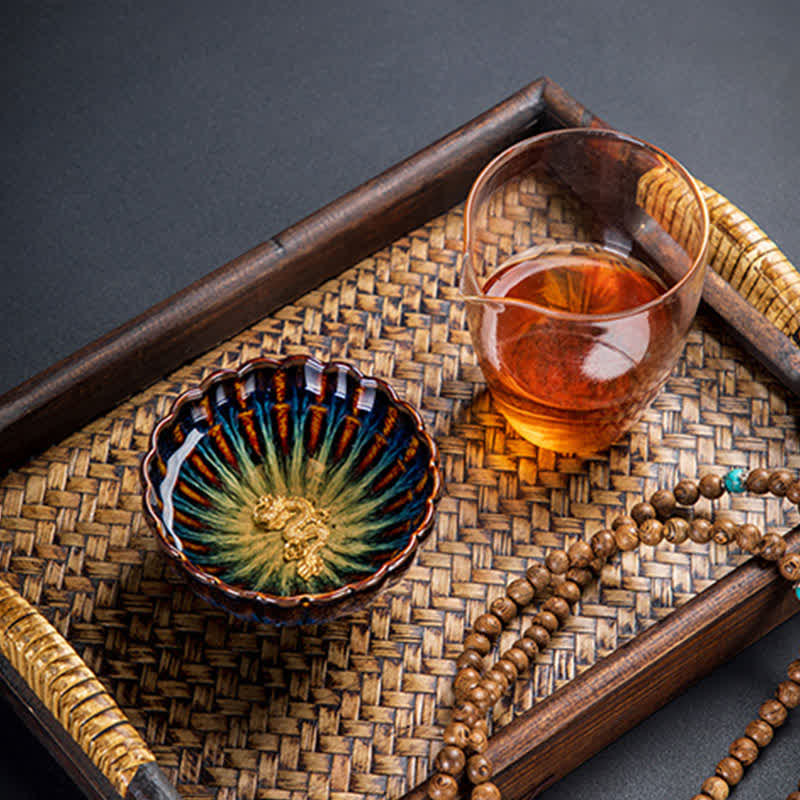
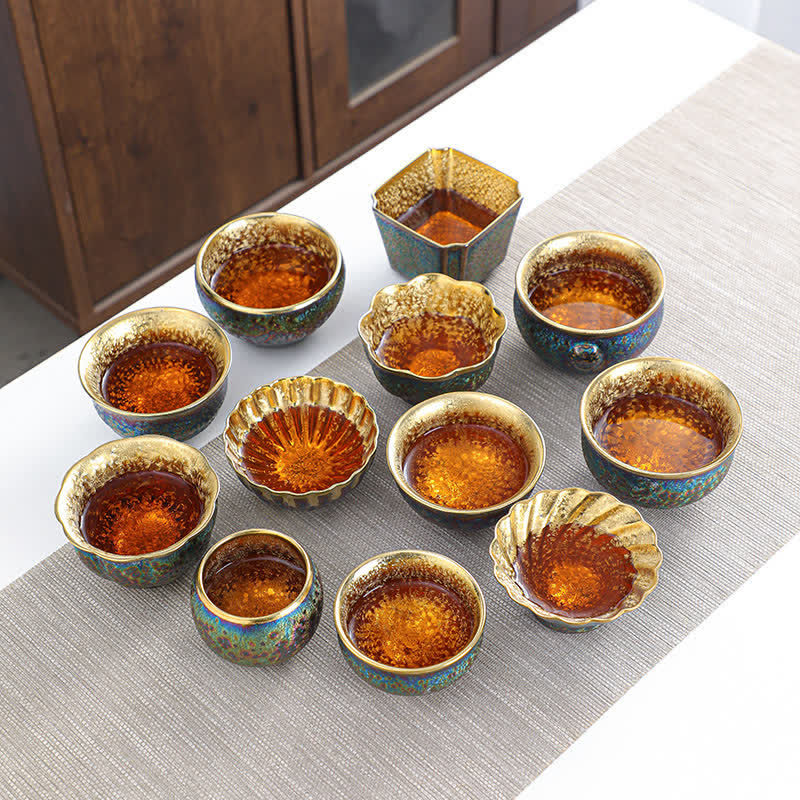
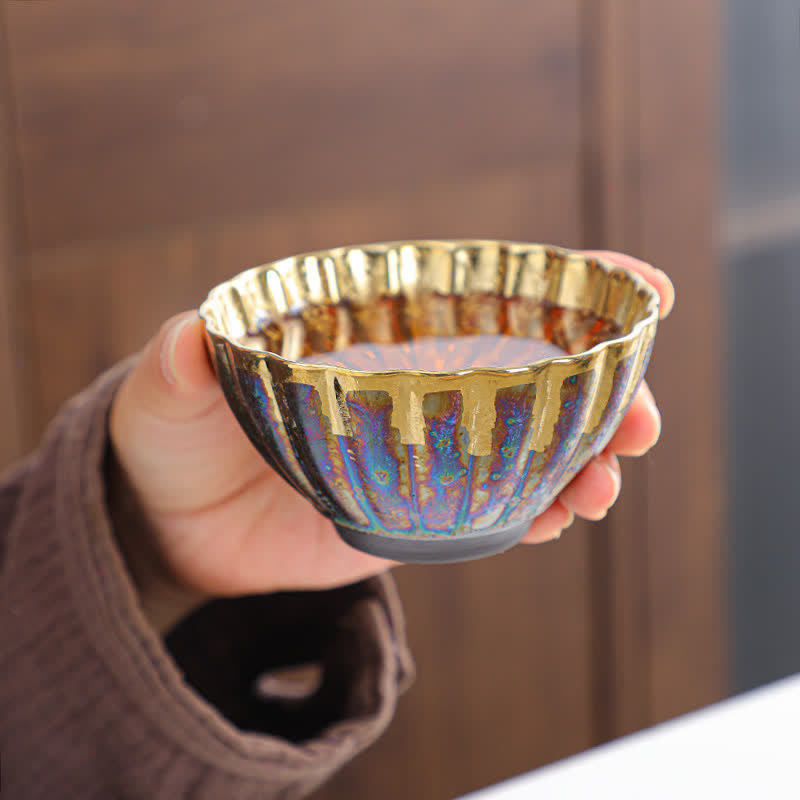


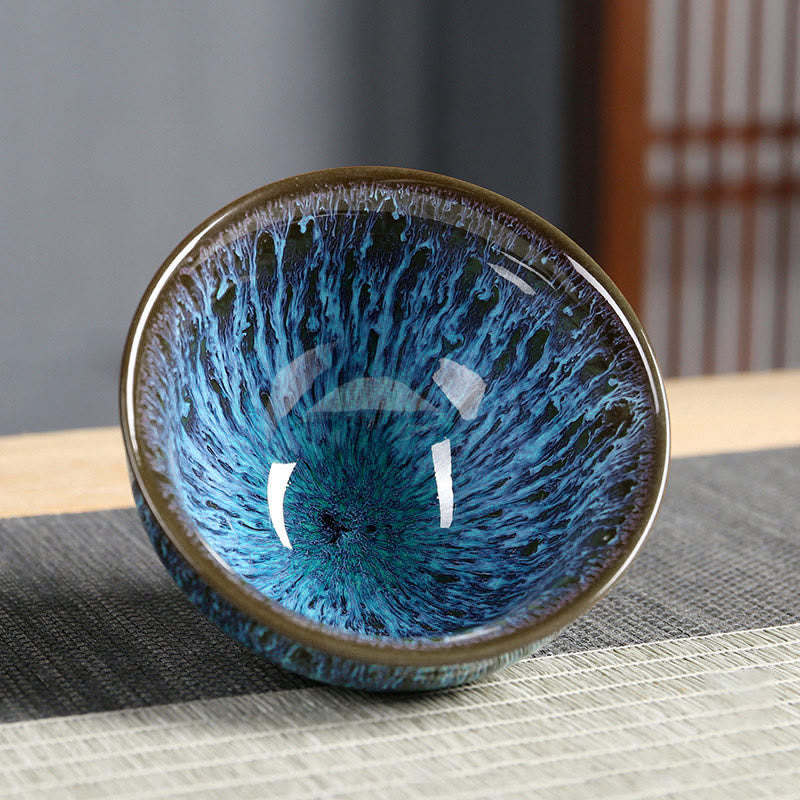
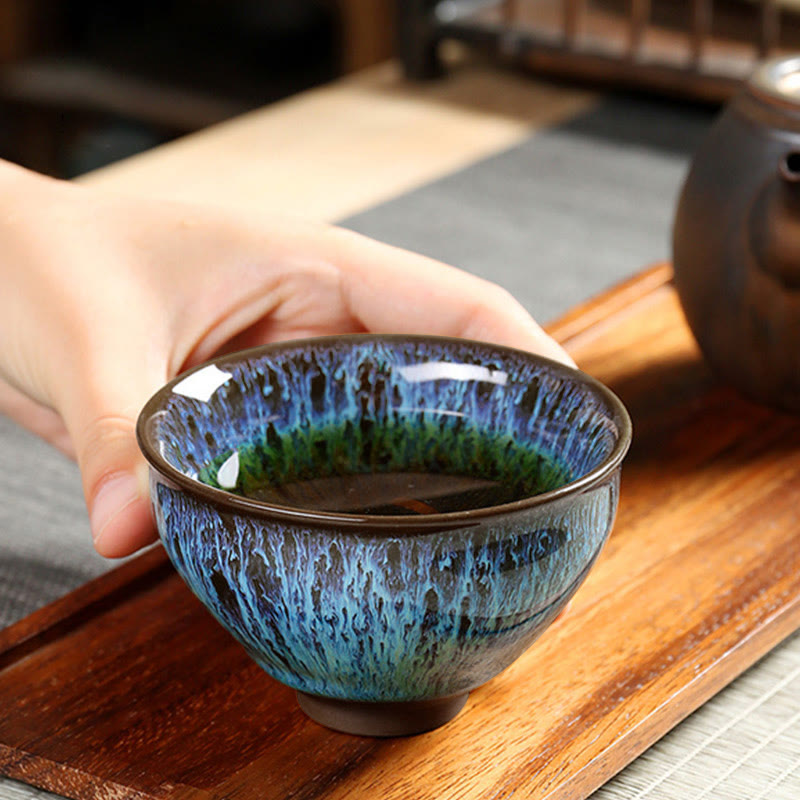
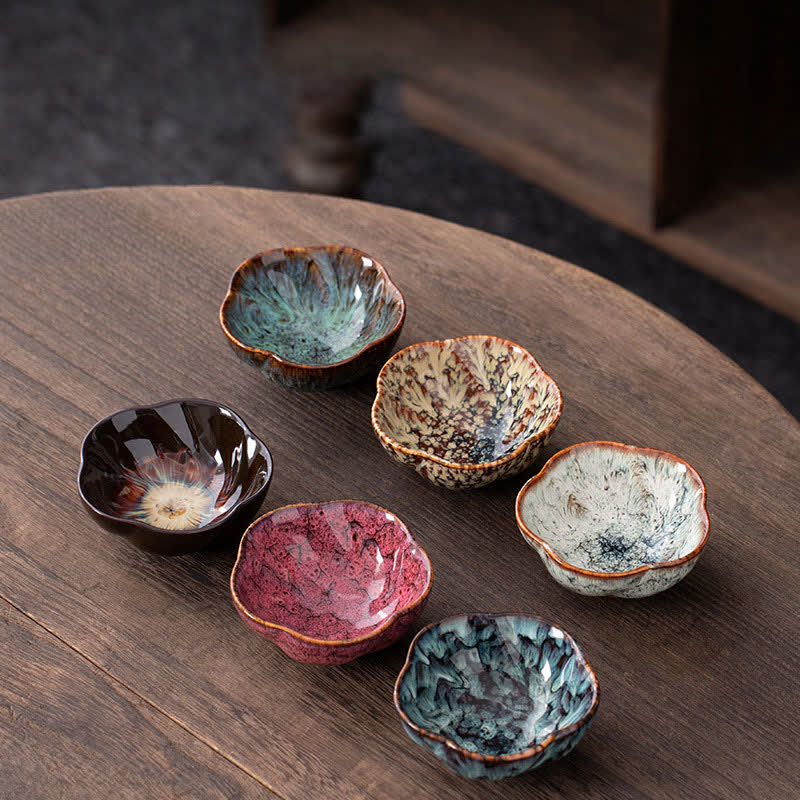


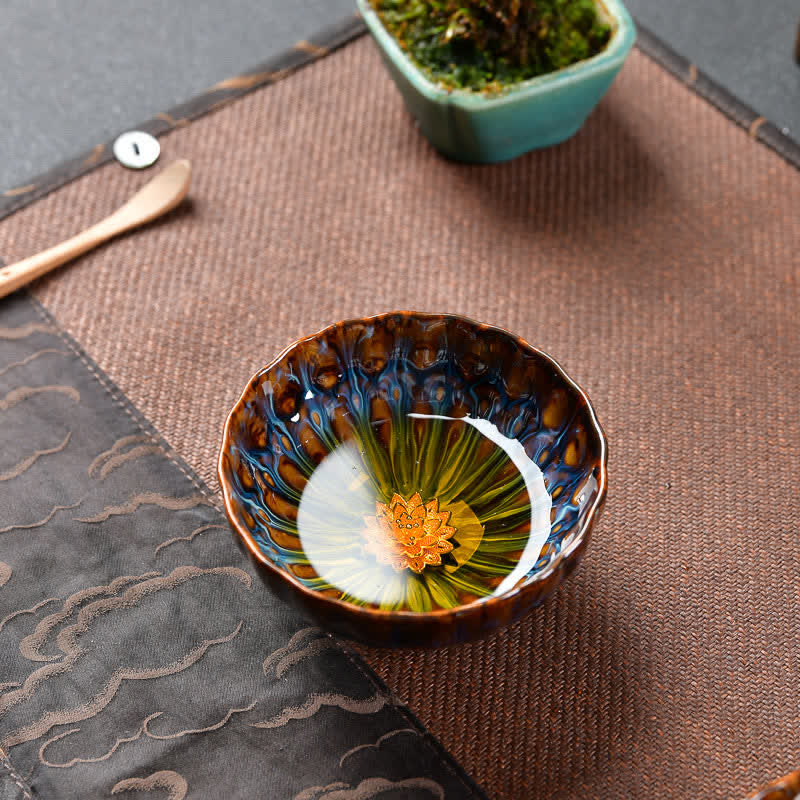
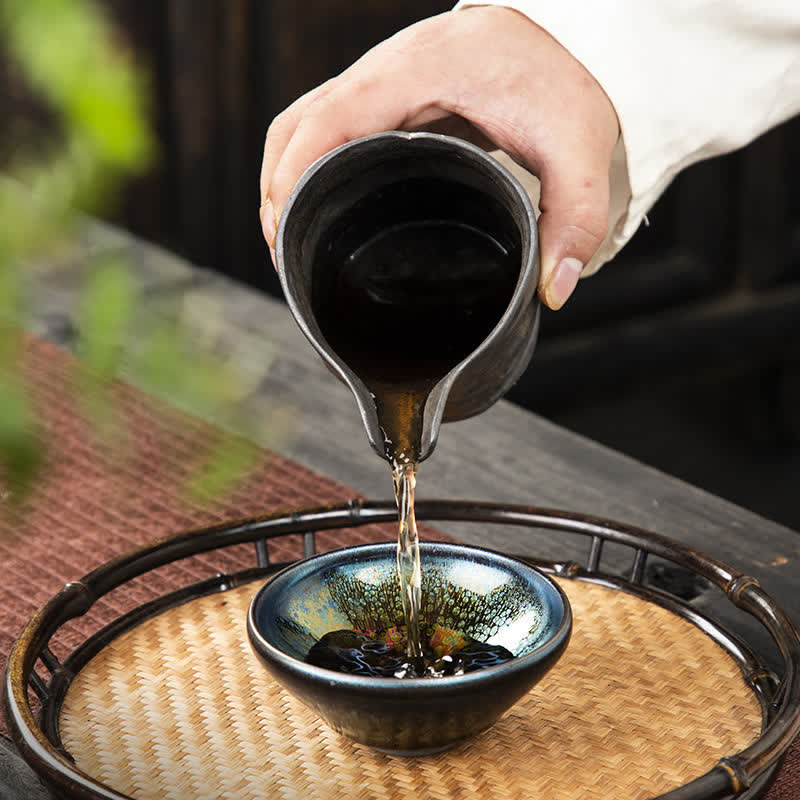
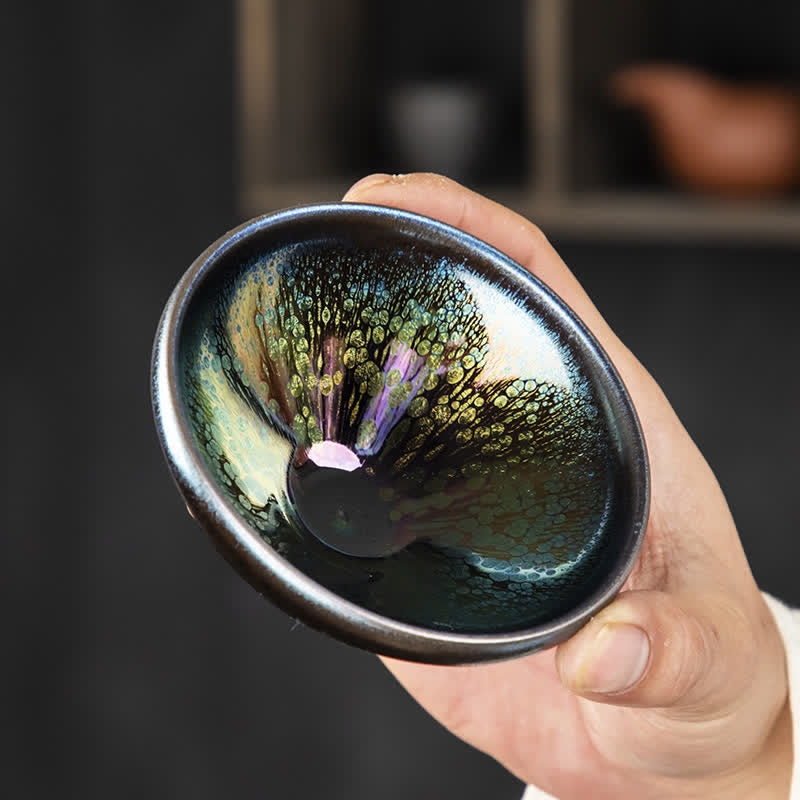
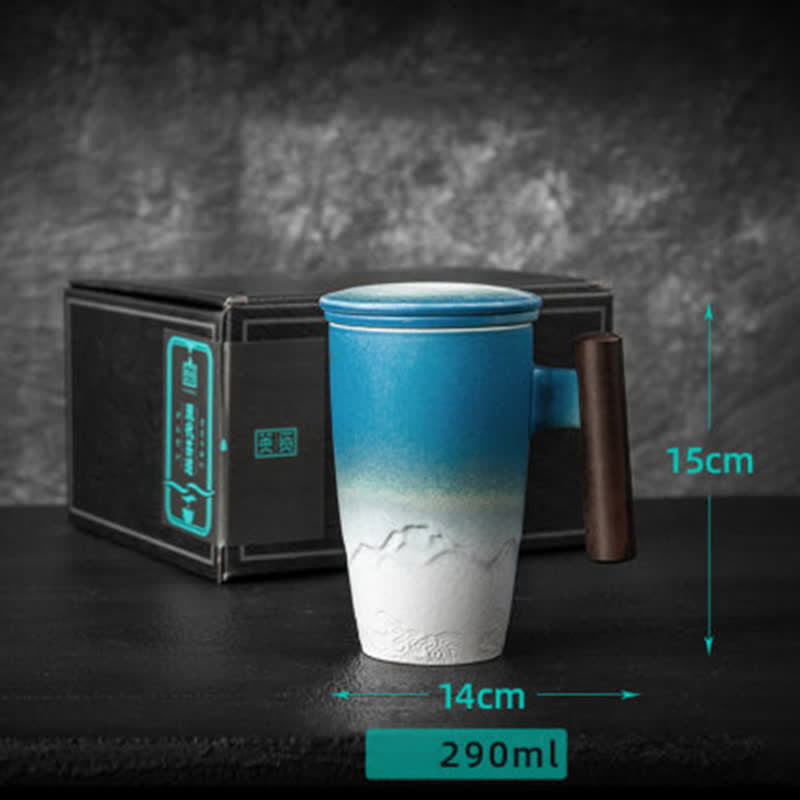
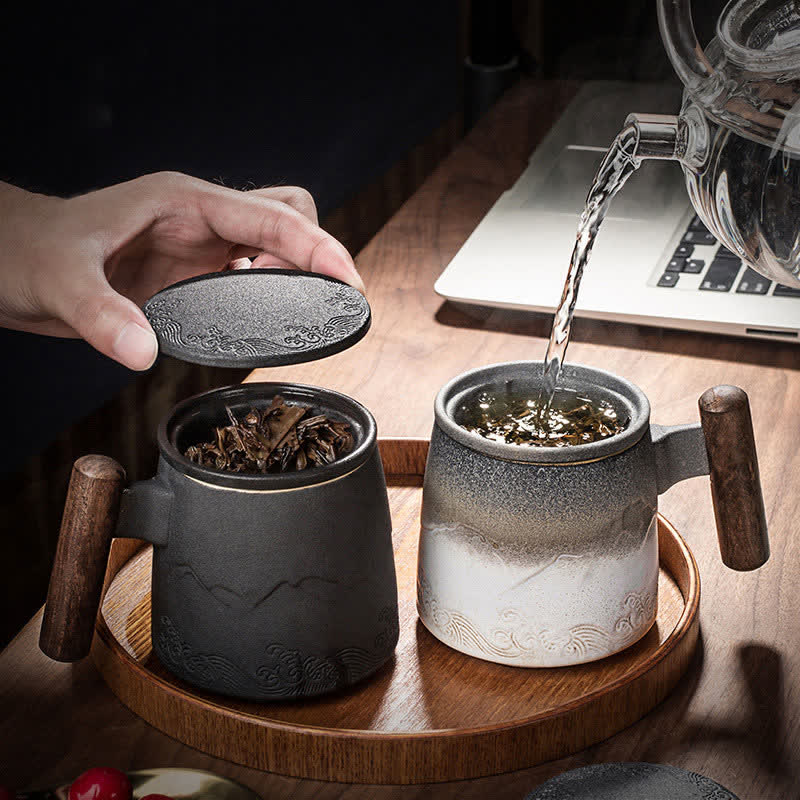

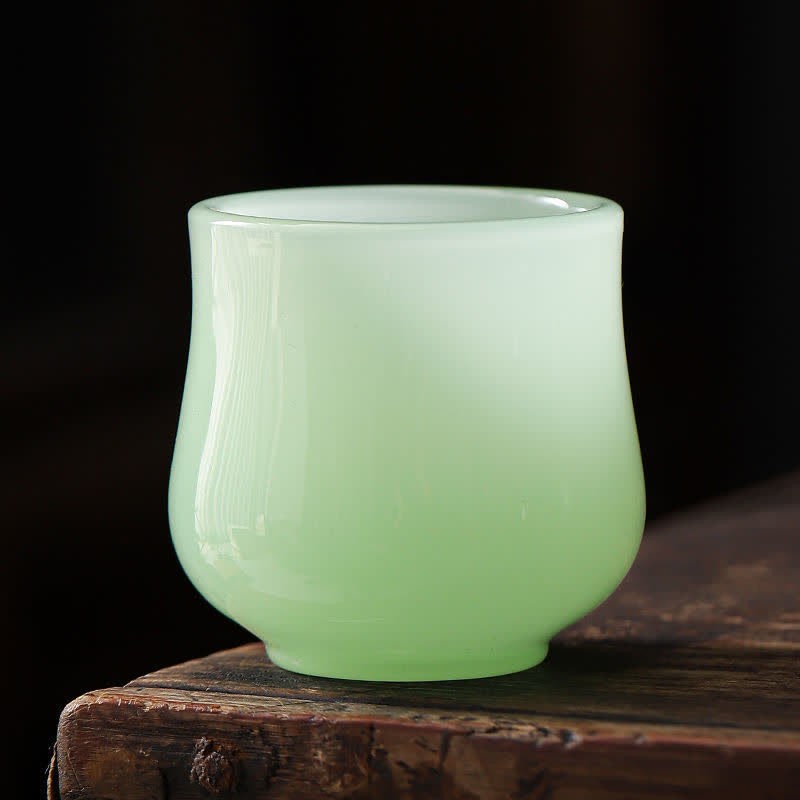
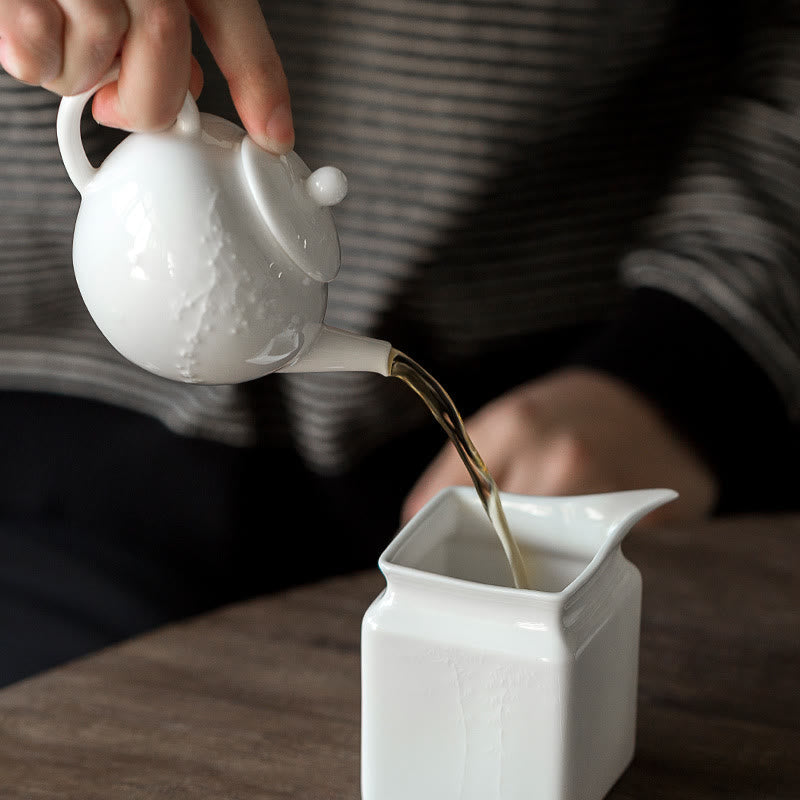
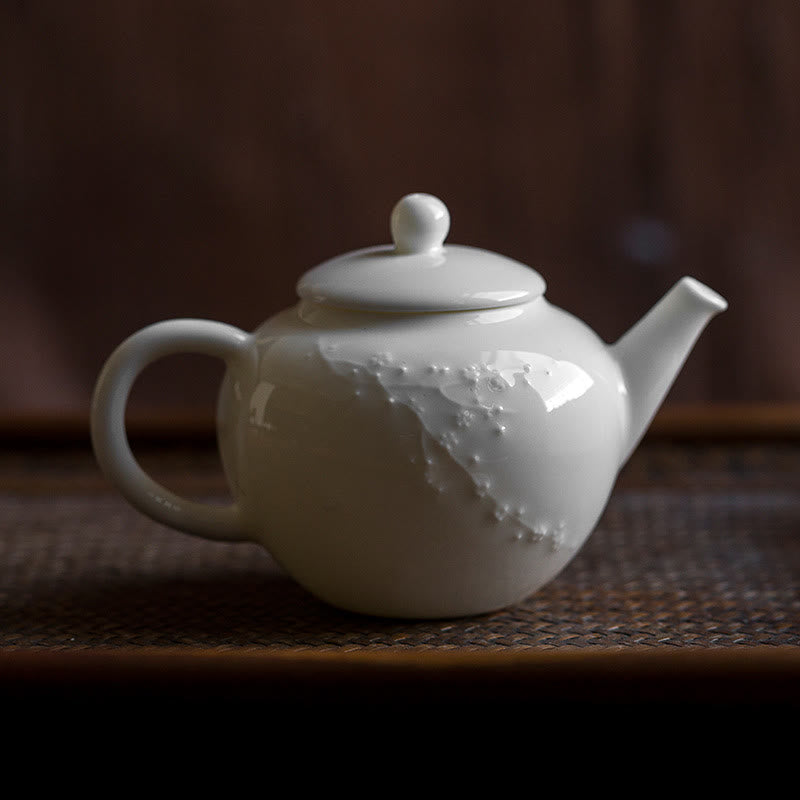
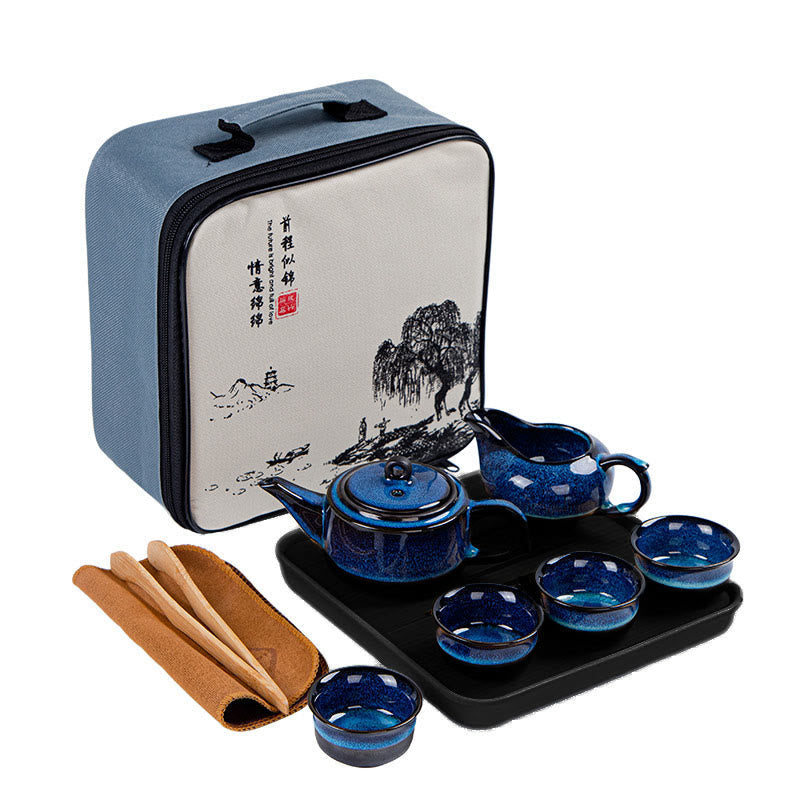
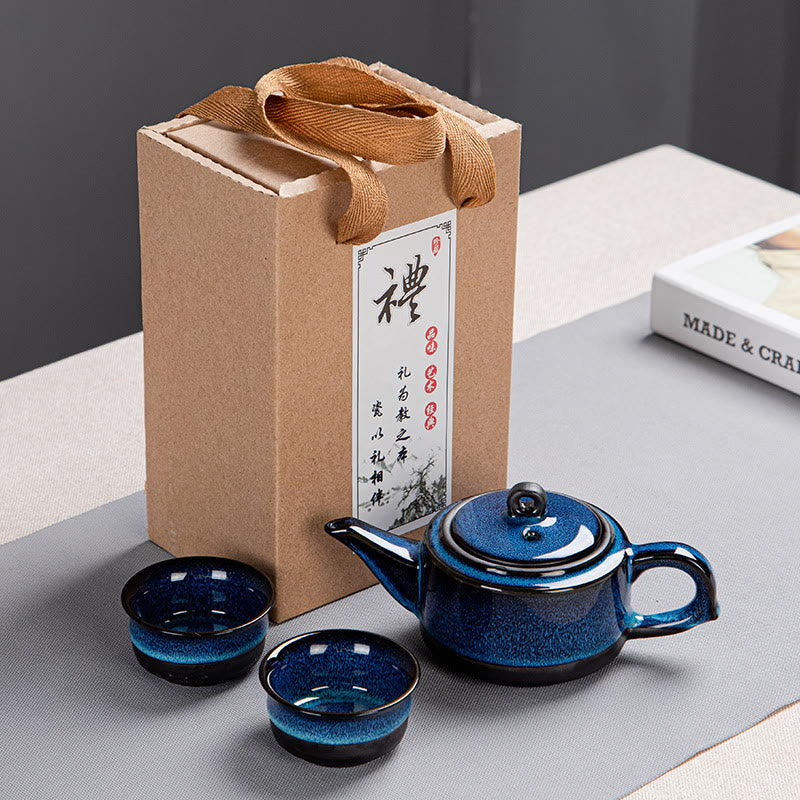
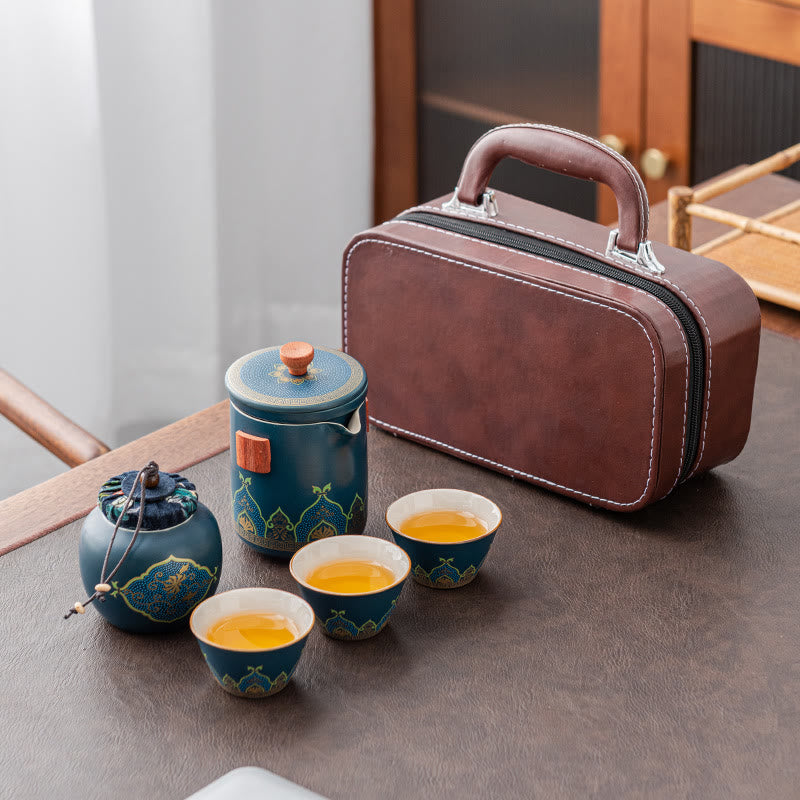
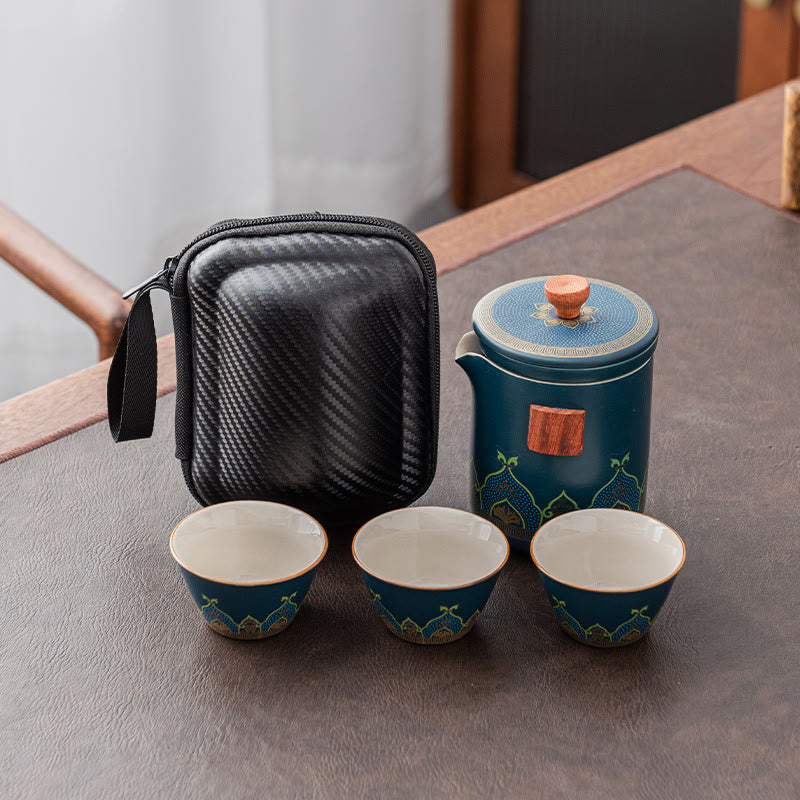
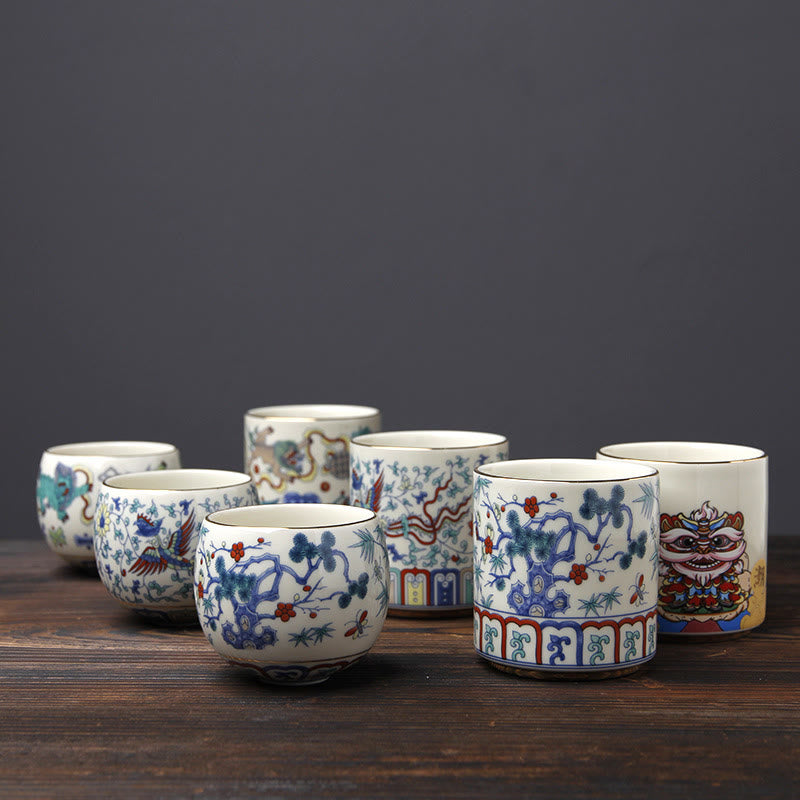

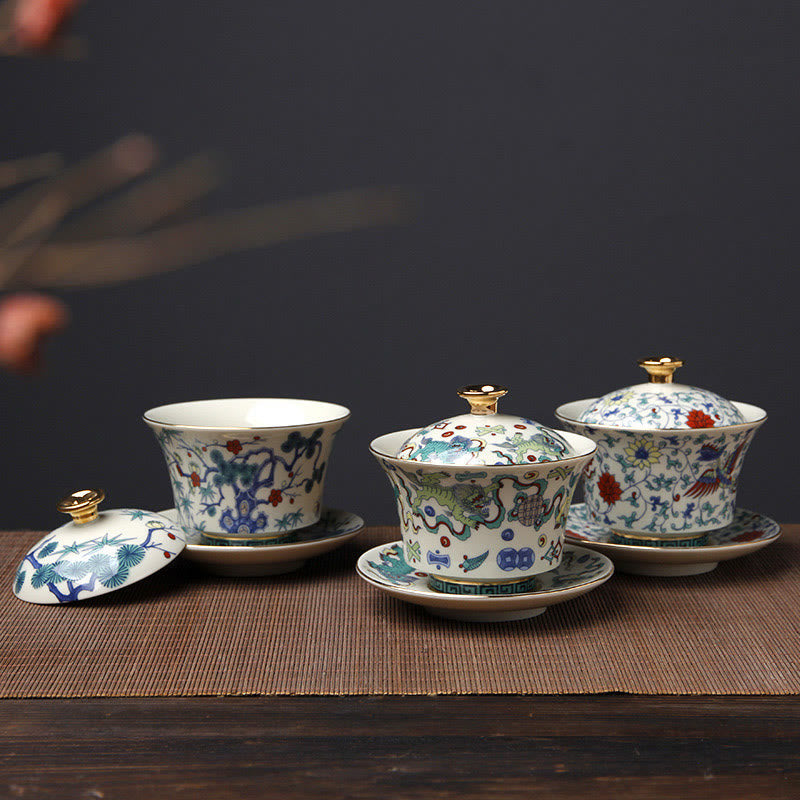
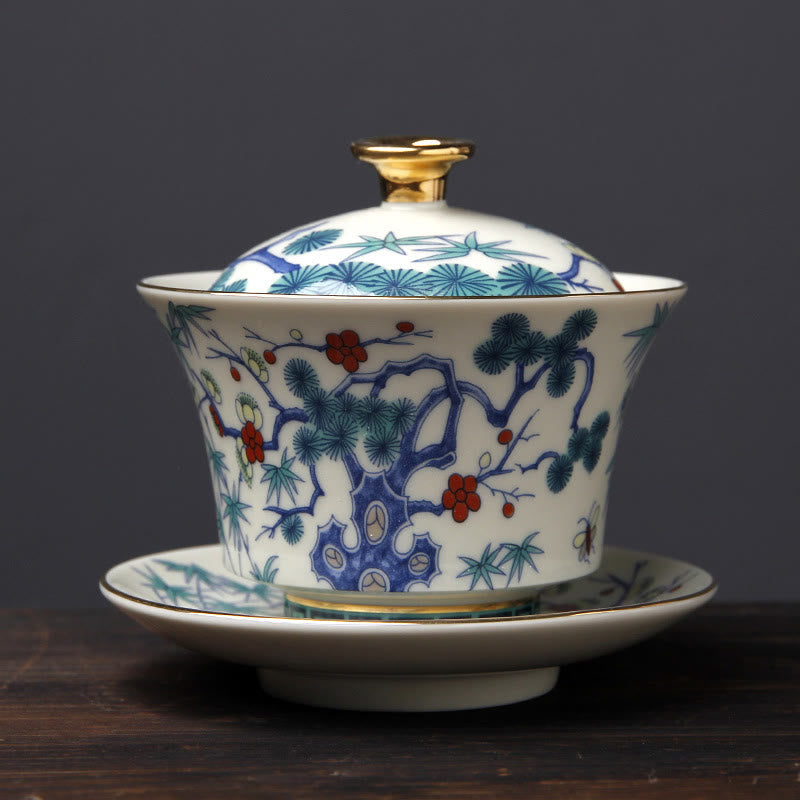
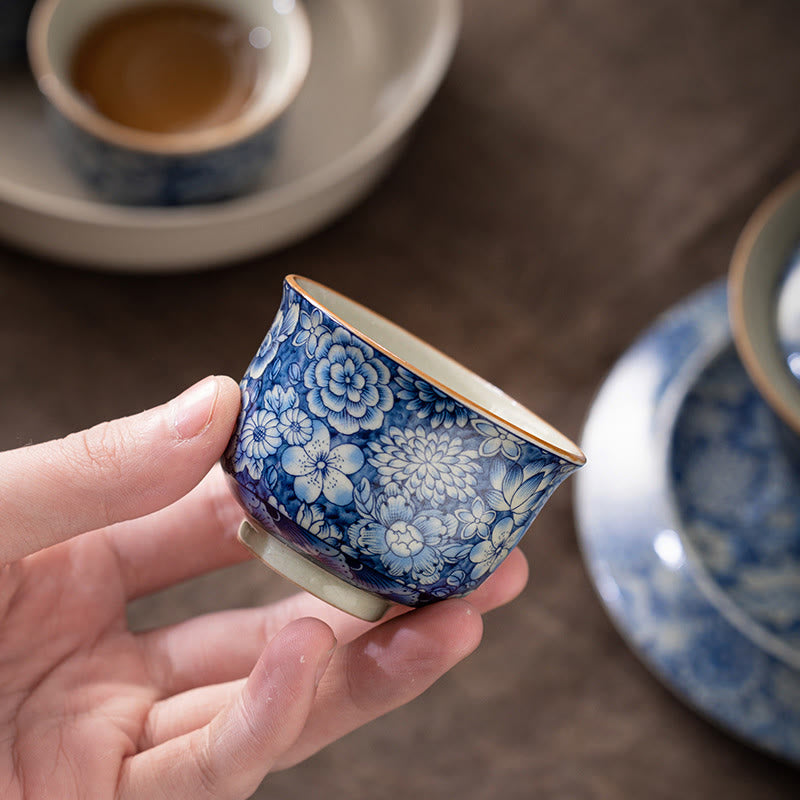
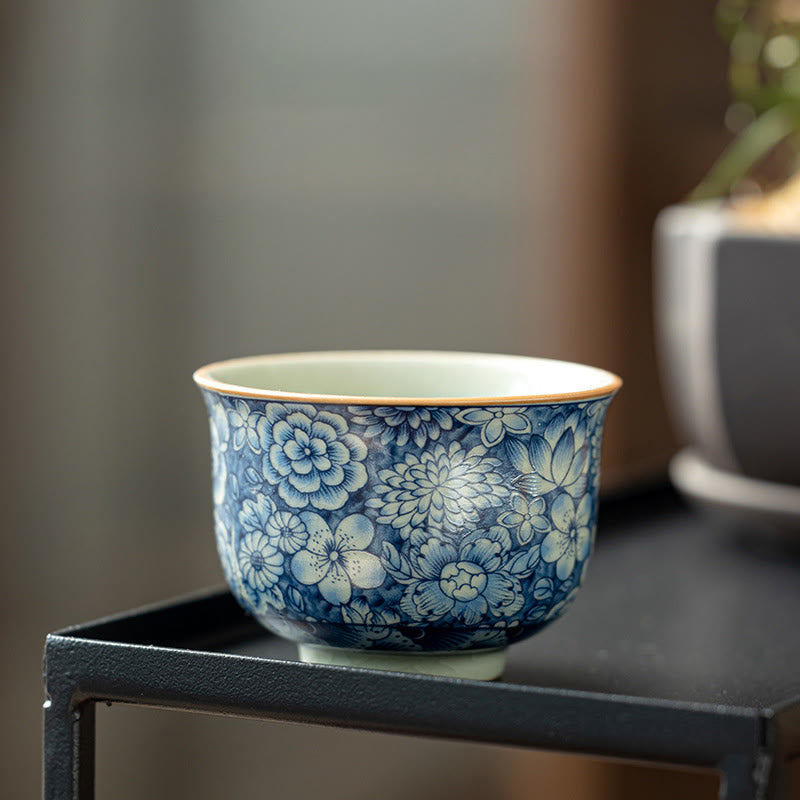
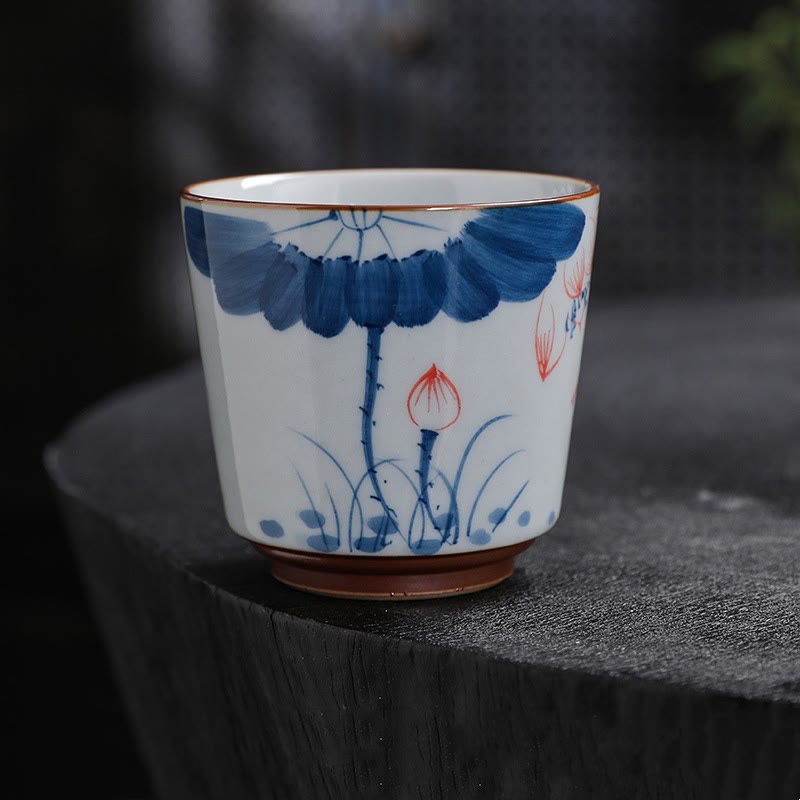
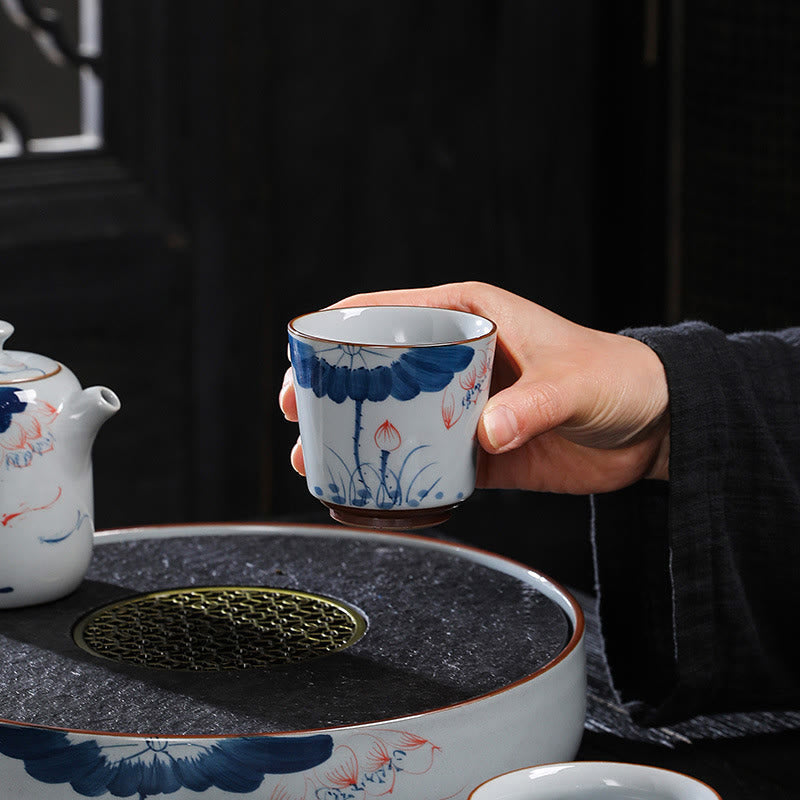
Willkommen in einer Welt, in der jeder Schluck eine Einladung zu Ruhe und Tradition ist. Unsere Kollektion chinesischer Teetassen bietet einen exquisiten Einstieg in die alte Kunst des Teetrinkens. Sie wurde entwickelt, um Ihre täglichen Rituale zu bereichern und Ihre Wertschätzung für dieses zeitlose Getränk zu vertiefen.
Entdecken Sie das perfekte Gefäß für Ihr Lieblingsgetränk – von kunstvoll gestalteten Stücken, die Geschichten vergangener Dynastien erzählen, bis hin zu minimalistischen Tassen, die moderne Gelassenheit ausstrahlen. Jede chinesische Teetasse in unserer Auswahl ist mehr als nur ein Trinkgefäß; sie ist ein Stück kulturelles Erbe, ein Werkzeug der Achtsamkeit und ein Wegbereiter für die reichen Aromen und Düfte feinen Tees.
Die anhaltende Faszination der chinesischen Teetasse
Die chinesische Teetasse ist ein geschichtsträchtiges Objekt mit tiefgreifender kultureller Bedeutung. Seit Jahrhunderten spielt sie eine zentrale Rolle bei Teezeremonien und im Alltag Chinas. Form und Material haben sich weiterentwickelt, doch ihr Kernzweck blieb stets erhalten: das Teetrinken zu verfeinern. Bei Healing Sounds würdigen wir dieses Erbe mit der Auswahl von Tassen, die Kunstfertigkeit und Authentizität zugleich verkörpern.
Um die Nuancen einer traditionellen chinesischen Teetasse zu verstehen, muss man ihr Design, die Geschichten hinter ihren Motiven und ihr Gefühl in der Hand wertschätzen. Sie sind nicht nur Gefäße, sondern Begleiter auf einer Geschmacks- und Entdeckungsreise, die uns in unserem geschäftigen Leben zu einem Moment der Ruhe und Besinnung einladen. Unsere Kollektion spiegelt die Vielfalt und Schönheit dieses ikonischen chinesischen Teegeschirrs wider.
Materialien chinesischer Keramik-Teetassen verstehen
Das Material einer chinesischen Teetasse beeinflusst maßgeblich Geschmack, Temperatur und das Gesamterlebnis des Teetrinkens. Chinesische Kunsthandwerker haben über Jahrtausende den Umgang mit verschiedenen Tonarten und Brenntechniken perfektioniert, was zu Teegeschirr führt, das für seine Qualität und Schönheit bekannt ist. Wir konzentrieren uns hauptsächlich auf Keramikvarianten, einschließlich des geschätzten Porzellans.
Porzellan – das typische Material für chinesische Teetassen
Porzellan gilt oft als Goldstandard für chinesische Teetassen . Seine porenfreie Beschaffenheit sorgt dafür, dass die Tasse weder die Aromen noch den Duft des Tees aufnimmt und so bei jedem Aufguss ein reines und unverfälschtes Geschmackserlebnis ermöglicht. Dies ist besonders wichtig beim Genuss von feinem weißen oder grünen Tee.
Die dünne Oberfläche von Porzellan ermöglicht zudem ein angenehmes Gefühl an den Lippen und erleichtert die Beurteilung der Teetemperatur. Viele klassische Teebecher und -tassen aus China sind mit aufwendigen handgemalten Mustern verziert, oft im ikonischen blau-weißen Stil, der das Können des Handwerkers unterstreicht. Die glatte, fast durchscheinende Qualität von hochwertigem Porzellan verleiht jeder Teestunde einen Hauch von Eleganz.
Vielseitige chinesische Keramik-Teetassen
Der Begriff „Keramik“ umfasst eine breitere Palette von tonbasierten Materialien, und chinesische Keramik-Teetassen bieten eine wunderbare Vielfalt an Texturen, Glasuren und thermischen Eigenschaften. Tassen aus Steingut und Ton wirken beispielsweise rustikaler und speichern die Wärme länger, was sich besonders für kräftigen Schwarztee oder Pu-Erh-Tee eignet.
Diese Keramik-Teetassen präsentieren sich oft in einer reichen Palette an Glasuren, von tiefen, erdigen Tönen bis hin zu lebendigen, experimentellen Oberflächen. Die subtilen Variationen der handgefertigten Keramikstücke machen jede Tasse einzigartig und verleihen Ihrer Teegeschirrsammlung eine persönliche Note. Im Vergleich zu Porzellan bieten sie ein anderes haptisches Erlebnis und wirken oft gehaltvoller und geerdeter.
The Refined Choice Teetassen aus Bone China
Obwohl Bone China in der alten chinesischen Teekultur nicht so traditionell verbreitet war wie Porzellan oder andere Keramik für den alltäglichen Gebrauch, hat es aufgrund seiner bemerkenswerten Stärke, Lichtdurchlässigkeit und zarten Erscheinung seinen Platz gefunden. Eine chinesische Teetasse aus Bone China vereint Haltbarkeit mit ätherischer Leichtigkeit.
Die Zusammensetzung von Bone China verleiht ihm einen strahlend weißen Farbton, der die Farbe des Tees wunderbar zur Geltung bringt. Es ist wie Porzellan porenfrei und sorgt so für reines Aroma. Für alle, die eine Kombination aus Widerstandsfähigkeit und raffinierter Ästhetik suchen, ist Bone China eine hervorragende Option im breiten Spektrum des chinesischen Teegeschirrs .
Funktionale Eleganz Die chinesische Teetasse mit Deckel und Sieb
Viele Designs chinesischer Teetassen verfügen über funktionale Details wie Deckel und Siebe. Diese Ergänzungen sind nicht nur dekorativ, sondern spielen auch eine praktische Rolle beim Aufbrühen und Genießen von Tee, insbesondere bei einzelnen Portionen oder bestimmten Teesorten.
Vorteile einer chinesischen Teetasse mit Deckel
Eine chinesische Teetasse mit Deckel , oft auch als „abgedeckte chinesische Teetasse“ oder als Teil eines Gaiwan-Sets bezeichnet, erfüllt mehrere Zwecke. Der Deckel hilft, die Wärme zu speichern, sodass die Teeblätter optimal ziehen können und der Tee länger warm bleibt. Dies ist besonders vorteilhaft für Teesorten, die höhere Temperaturen oder längere Ziehzeiten benötigen.
Darüber hinaus kann der Deckel zum sanften Umrühren der Blätter oder zum Zurückhalten loser Blätter beim Trinken verwendet werden, insbesondere wenn die Tasse kein Sieb hat. Er schließt außerdem die Aromen ein, sodass Sie beim Anheben ein intensiveres Geruchserlebnis genießen können. Die chinesische Deckelschale , auch Gaiwan genannt, ist ein Paradebeispiel für dieses funktionale Design.
Verwendung einer chinesischen Teetasse mit Sieb
Wer losen Tee lieber direkt in der Tasse aufbrüht, für den ist eine chinesische Teetasse mit Sieb oder Teesieb äußerst praktisch. Diese Siebe, oft aus Keramik oder Edelstahl, passen perfekt in die Tasse, halten die Teeblätter während des Ziehens und ermöglichen eine einfache Entnahme, sobald die gewünschte Stärke erreicht ist.
Dieses Design vereinfacht den Brühvorgang und ermöglicht den Genuss von hochwertigem losen Tee, ohne dass eine separate Teekanne erforderlich ist. Eine Teetasse mit Sieb eignet sich perfekt für einen schnellen, wohltuenden Aufguss zu Hause oder im Büro und vereint Gefäß und Brühwerkzeug in einem eleganten Paket.
Der Gaiwan – eine traditionelle chinesische Teetasse zum Aufbrühen
Der Gaiwan ist eine spezielle chinesische Teetasse mit Deckel , bestehend aus einer Schale, einem Deckel und einer Untertasse. Es handelt sich um ein vielseitiges chinesisches Teegefäß, das traditionell sowohl zum Aufgießen als auch zum Trinken von Tee verwendet wird. Der Deckel dient dazu, Teeblätter beim direkten Trinken aus der Schale zurückzuhalten oder den Tee in kleinere Probiertassen umzufüllen.
Die Verwendung einer Gaiwan-Teetasse ist eine Fähigkeit, die das Teeritual bereichert und die Kontrolle über Ziehzeit und Temperatur ermöglicht. Sie wird besonders für Oolong-, Grün- und Weißtees verwendet, da der Trinker die Blätter beim Aufgehen beobachten und das sich entwickelnde Aroma und Geschmacksprofil durch mehrere Aufgüsse genießen kann. Viele halten sie für einen unverzichtbaren Bestandteil eines Gongfu-Teeservices .
Ikonische Stile: Blaue chinesische Teetassen und antike chinesische Teetassen-Designs
Die ästhetische Anziehungskraft chinesischer Teetassen ist unbestreitbar. Die Stile reichen von klassisch schlicht bis kunstvoll symbolisch. Bestimmte Designs sind zu Ikonen geworden und weltweit für ihre Schönheit und kulturelle Bedeutung bekannt. Die Erkundung dieser Stile gleicht einer Reise durch die chinesische Kunstgeschichte.
Der klassische Reiz blauer chinesischer Teetassen
Es gibt wohl keinen Stil, der chinesisches Porzellan so symbolisch repräsentiert wie das blau-weiße Design . Blaue chinesische Teetassen , verziert mit komplizierten Mustern aus kobaltblauer Unterglasur auf weißem Porzellan, werden seit Jahrhunderten geschätzt. Diese Designs zeigen oft Landschaften, Blumenmotive, Drachen, Phönixe oder Szenen aus der Folklore.
Der Kontrast zwischen dem strahlenden Blau und dem reinweißen Porzellan erzeugt einen optisch beeindruckenden Effekt, der elegant und zeitlos zugleich ist. Das Sammeln blauer chinesischer Teetassen ermöglicht es, die Kunstfertigkeit und die Geschichten dieser klassischen Keramiktradition zu schätzen. Jedes Stück kann ein kleines Kunstwerk sein.
Erkundung des Erbes antiker chinesischer Teetassen
Eine antike chinesische Teetasse vermittelt ein Gefühl von Geschichte und verbindet die Vergangenheit. Diese ehrwürdigen Stücke, ob aus renommierten Brennöfen oder schlichtere Alltagsware aus vergangenen Zeiten, bieten eine greifbare Verbindung zur Teetradition des alten China. Die Patina, kleine Unvollkommenheiten oder einzigartige Merkmale antiker Teetassen erzählen die Geschichte ihrer Reise durch die Zeit.
Während echte Antiquitäten selten und wertvoll sind, lassen sich viele zeitgenössische Kunsthandwerker von historischen Designs inspirieren und schaffen Reproduktionen oder moderne Interpretationen, die den Geist dieser älteren Stile einfangen. Der Besitz eines solchen oder eines von der Antike inspirierten Stücks verleiht dem Teeritual eine zusätzliche Tiefe und Ehrfurcht.
Symbolische Bilder in der traditionellen chinesischen Teetassenkunst
Viele traditionelle chinesische Teetassen -Designs sind reich an Symbolik. Drachen beispielsweise stehen für Macht, Glück und kaiserliche Autorität. Phönixe symbolisieren Anmut, Tugend und Kaiserin. Blumenmotive wie Pfingstrosen symbolisieren Reichtum und Wohlstand, während Pflaumenblüten für Widerstandsfähigkeit und Schönheit in der Not stehen.
Das Verständnis dieser Symbole kann Ihre Wertschätzung für die Kunstfertigkeit der Tasse bereichern. Sogar die verwendeten Farben können spezifische Bedeutungen haben. Diese visuelle Sprache verwandelt eine einfache Teetasse in einen Träger kultureller Werte und glückverheißender Wünsche und verleiht Ihrem Teemoment noch mehr Bedeutung.
Kulturelle Bedeutung und Verwendung Ihrer traditionellen chinesischen Teetasse
Die chinesische Teetasse ist mehr als nur ein Trinkgefäß; sie ist ein integraler Bestandteil der chinesischen Kultur, insbesondere im Kontext von Teezeremonien und gesellschaftlichen Interaktionen. Ihr Design und ihre Verwendung spiegeln tief verwurzelte Philosophien über Gastfreundschaft, Respekt und die Wertschätzung einfacher Freuden wider.
Die Rolle der chinesischen Teetasse im Gongfu Cha
Bei der Gongfu-Teezeremonie (Gongfu Cha), einer sorgfältigen und kunstvollen Art der Teezubereitung, ist die Wahl des Teegeschirrs von größter Bedeutung. Das Gongfu-Teeservice umfasst typischerweise kleine, feine Probiertassen, oft kombiniert mit einer Yixing-Teekanne oder einem Gaiwan. Diese Mini-Teetassen konzentrieren das Aroma und den Geschmack des Tees und ermöglichen so ein konzentriertes und genussvolles Geschmackserlebnis.
Die Zeremonie betont die Qualität des Tees, das Können des Teebereiters und die ästhetische Harmonie des Teegeschirrs. Jeder Schluck aus einer traditionellen chinesischen Gongfu-Teetasse ist ein Akt der Achtsamkeit und fördert die Verbindung zwischen dem Trinkenden, dem Tee und dem gegenwärtigen Moment.
Die Praktikabilität der Teetasse ohne Henkel
Ein charakteristisches Merkmal vieler traditioneller chinesischer Teetassen ist das Fehlen von Henkeln. Das henkellose Design ist bewusst gewählt und tief in der Tradition verwurzelt. Es ermutigt den Trinkenden, die Tasse mit beiden Händen zu halten, und fördert so ein Gefühl der Verbundenheit und Wärme mit dem Tee.
Dieses Design erfüllt auch einen praktischen Zweck: Ist die Tasse zu heiß, um sie bequem zu halten, signalisiert es, dass auch der Tee darin zu heiß zum Trinken ist, und verhindert so Verbrühungen. Es fördert einen achtsameren und respektvolleren Umgang mit dem Tee und steigert das gesamte Sinneserlebnis.
Mini-Teetassen für einen besseren Geschmack
Mini-Teetassen , die im Gongfu-Teeservice und zum Verkosten kräftiger Teesorten üblich sind, sind für den Genuss kleiner Mengen intensiv aromatischer Aufgüsse gedacht. Ihre geringe Größe ermöglicht es dem Tee, etwas schneller auf eine optimale Trinktemperatur abzukühlen und das Aroma zu konzentrieren, sodass jeder Schluck zu einem intensiven Erlebnis wird.
Diese kleineren Tassen ermöglichen mehrere Aufgüsse derselben Blätter und ermöglichen es dem Teetrinker, den sich über mehrere Aufgüsse hinweg entwickelnden Charakter des Tees zu erkunden. Sie eignen sich perfekt, um die nuancierten Aromen hochwertiger Oolongs, Pu-Erh-Tees und anderer chinesischer Teespezialitäten zu genießen.
Wählen Sie Ihre ideale chinesische Teetassenreise
Die Wahl einer chinesischen Teetasse ist eine persönliche Angelegenheit. Überlegen Sie, welche Teesorten Ihnen am besten schmecken. Zarter Grüntee schmeckt am besten in dünnem Porzellan, während kräftiger Schwarztee in einer stabileren Keramiktasse gut aufgehoben ist. Überlegen Sie, welche Ästhetik Ihnen am besten gefällt – bevorzugen Sie die klassische Eleganz blauer chinesischer Teetassen , den historischen Charme antiker chinesischer Teetassen oder die moderne Schlichtheit schlichter Designs?
Berücksichtigen Sie die Funktionalität: Würde eine chinesische Teetasse mit Deckel oder eine chinesische Teetasse mit Sieb Ihr tägliches Ritual bereichern? Vielleicht spricht die Vielseitigkeit einer Gaiwan-Teetasse Ihren Wunsch an, traditionelle Zubereitungsmethoden zu entdecken. Was auch immer Sie bevorzugen, jede chinesische Teetasse in unserer Kollektion bei Healing Sounds wird aufgrund ihrer Qualität, Schönheit und Fähigkeit ausgewählt, Ihren Teemomenten einen Hauch von Ruhe und Kunstfertigkeit zu verleihen.
Entdecken Sie unsere sorgfältig zusammengestellte Auswahl und finden Sie die chinesische Teetasse , die Ihren Geist anspricht. Sie wird Sie in Momenten der Stille begleiten, Sie wird Sie mit Freunden teilen und Ihnen die faszinierende Welt der chinesischen Teekultur eröffnen.
Häufig gestellte Fragen zu chinesischen Teetassen
Chinesische Teetassen werden im Mandarin im Allgemeinen als „chábēi“ (茶杯) bezeichnet. Bestimmte Typen haben ihre eigenen Namen; beispielsweise wird eine Tasse mit Deckel, die zum Aufbrühen und Trinken verwendet wird , „gàiwǎn“ (盖碗) genannt. Der Begriff hängt oft vom Stil, Material und Verwendungszweck innerhalb der chinesischen Teegeschirrtradition ab.
Eine chinesische Teetasse hat eine tiefe kulturelle Bedeutung und steht für Gastfreundschaft, Respekt und die Kunst des Teetrinkens (Cha Dao). Sie ist ein zentrales Element bei gesellschaftlichen Zusammenkünften, Geschäftstreffen und Zeremonien wie der Gongfu-Teezeremonie . Design und Material spiegeln oft künstlerische Traditionen und philosophische Konzepte wider und machen sie zu mehr als nur einem Gebrauchsgegenstand.
Traditionelle chinesische Teetassen werden zum Aufbrühen, Servieren und Genießen verschiedener chinesischer Teesorten verwendet. Kleinere Tassen werden in der Gongfu-Teezeremonie häufig für konzentrierte Verkostungen verwendet, während größere Tassen oder Gaiwans für den individuellen Genuss verwendet werden. Sie sollen das Aroma, den Geschmack und das ästhetische Gesamterlebnis des Teerituals verstärken.
Porzellan wird für chinesische Teetassen sehr bevorzugt, da es porenfrei ist und somit keine Aromen oder Düfte des Tees aufnimmt, was einen unverfälschten Geschmack ermöglicht. Die dünne Oberfläche sorgt für ein zartes Mundgefühl und erleichtert die Beurteilung der Teetemperatur. Darüber hinaus bringt die weiße oder helle Oberfläche des Porzellans die wahre Farbe des Tees wunderbar zur Geltung und eignet sich hervorragend für kunstvolle Designs.
Tee schmeckt oft besser aus einer Porzellantasse (Porzellan oder Bone China), da diese Materialien porenfrei und inert sind. Dadurch reagiert die Tasse nicht mit dem Tee und nimmt dessen Aromen nicht auf, was zu einem authentischeren Geschmack des Tees führt. Der dünne Rand vieler Porzellantassen kann zudem das Geschmackserlebnis beim Trinken verstärken.
Das Design traditioneller chinesischer Teetassen zeichnet sich oft durch spezifische Materialien wie Porzellan oder Yixing-Ton, ikonische Motive (z. B. Drachen, Phönixe, Landschaften, Kalligrafie), klassische Farbpaletten wie Blau und Weiß und Formen wie die henkellose Teetasse oder den Gaiwan aus. Die Einhaltung historischer Handwerkstechniken und Symbolik trägt ebenfalls zum traditionellen Charakter bei.
Viele chinesische Teetassen haben keine Henkel , um eine direktere Verbindung zum Tee zu ermöglichen. Durch das Halten der Tasse spürt der Trinkende die Wärme. Traditionell gilt: Ist die Tasse zu heiß, um sie bequem zu halten, ist der Tee zu heiß zum Trinken. Dieses Design fördert die Achtsamkeit und verhindert Verbrühungen im Mund.
Eine chinesische Teetasse mit Deckel ist am bekanntesten als „Gaiwan“ (盖碗) , was übersetzt „Schale mit Deckel“ bedeutet. Gaiwans bestehen aus einer Schale, einem Deckel und einer Untertasse und werden sowohl zum Aufbrühen als auch zum Trinken von Tee verwendet. Andere Tassen mit Deckel werden einfach als „chinesische Teetassen mit Deckel“ bezeichnet.
So verwenden Sie eine chinesische Teetasse mit Deckel (z. B. einen Gaiwan): Geben Sie die Teeblätter in die Schale, gießen Sie heißes Wasser hinzu und decken Sie sie zum Ziehen mit dem Deckel ab. Der Deckel hält Wärme und Aroma. Zum Trinken kippen Sie den Deckel leicht, um eine kleine Öffnung zu schaffen, durch die Sie die Blätter beim Nippen abseihen können. Alternativ können Sie den Tee auch in eine andere Tasse umfüllen.
So verwenden Sie eine Gaiwan-Teetasse : 1. Erwärmen Sie den Gaiwan mit heißem Wasser und schütten Sie es anschließend weg. 2. Geben Sie die Teeblätter hinein. 3. Gießen Sie heißes Wasser über die Blätter und lassen Sie den Tee mit dem Deckel für die gewünschte Ziehzeit ziehen. 4. Halten Sie zum Trinken Untertasse und Schale fest und kippen Sie den Deckel leicht, um einen Spalt zu bilden. Trinken Sie direkt aus der Schale oder füllen Sie den Tee in Probiertassen um. Der Deckel dient als Sieb.
Um eine größere Auswahl exquisiter Töpferwaren aus dieser reichen Tradition zu entdecken, besuchen Sie unsere Sammlung chinesischer Keramik .






